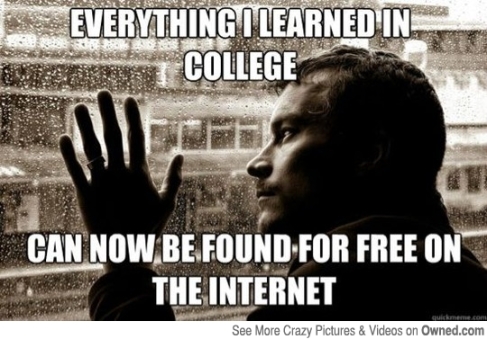Identity construction is a thread that I see running through Buck’s (2012) and boyd’s (2008) article. Buck gives us a picture of Ronnie, an avid social media user who saw platforms like Facebook, Twitter, and Flickr as part of his “self-branding” (2012: 14) conquest to put himself out there. boyd, on the other hand, looks at the way teens treat (and simply love) Myspace. I have been and still am part of the social media-sphere, yet there are some things that still make me wonder…
Specifically, while reading these two articles, I could not help zeroing in on the idea of trying on new personas, the idea that individuals can create different selves online. I question, however, just how much of themselves online users are transforming without having to truly let go of their offline personas. (In the fanficiton community, we affectionately call this “OOC,” or out of character.) After all, even though it was a stupid April Fools joke, Ronnie pretended that he had a girlfriend, made a Facebook account for her using a fabricated university email address, and in a way posed as her by writing posts that we supposedly written by her, he still changed his relationship status to “In a relationship,” which meant that offline he is still being the typical young adult experimenting with flirting and creating relationships. If social media users are trying to show themselves to a specific audience and for a specific, perhaps personal reason, I would think that their content (relationship status, texts, images, videos, music, etc.) would have to retain some semblance of their offline selves.
The impression that I got from boyd’s article is that adolescent’s shape their identity in order to have an identity prepared for their world outside of social media. This is probably part of negotiating one’s identity that will be presented for specific spaces and audience either online or offline. It is also a case where, through writing and designing the look of one’s website, which was the case for Xanga and Myspace when I used it, social media users’ online and offline worlds may collide. We are always warning students to be mindful of the things they post on Facebook or Twitter because future employers can search them out and assume that the identities they create online are a reflection of what they will bring to workforce. I have to agree with what Monica posted on her blog about searchability because I have done random searches of my name, my older Facebook accounts, which I deactivated, popped up, and I was able to read the nonsense that I wrote. I am not saying that I had to completely change my online persona to reflect my offline persona; I still wrote about anime, but I did so in a way that projected the persona of a civil, careful writer. My question, though, is how we might simulate this in a composition class if an instructor were interested in helping his or her students shape themselves online and offline to benefit them in the future.
Furthermore, I want address the issue of ownership of one’s identity on social media platforms. As I was reading Buck’s story of Ronnie occupying different social media platforms to “manage” (p. 21) his identity, I wrote the following questions in my notes: Who really owns the content users put online? In fact, who owns the identity that is being portrayed online: the person trying to portray their identity by using text, music, color, pictures, etc., or the person who owns the domain in which the identity is situated? After all, for adolescents Myspace allowed its users to tinker with their pages’ HTML code so that instead of having the default layout, the user’s page could have a music player playing songs that “described” the user or featured Tinkerbell on it. They could do anything to project their identity to hopefully be accepted by their peers and eventually gain some kind of status. On Facebook or Twitter where design is more constrained, users post text or video that somehow show their identities, but these sites are hosting the content users post online. At the end of the day who is the real owner of these identities being projected? Myspace, Facebook, and Twitter have control over what its users are able to do, but it is the users who are the ones leveraging these platforms to create personas others will consume one way or another. Students, especially those in college, are consuming and using social media, but as academics who see the implications writing in social media platforms, how might we make teachable this issue of ownership of one’s identity on social media?
